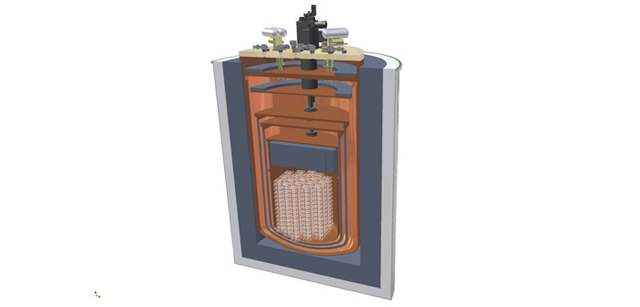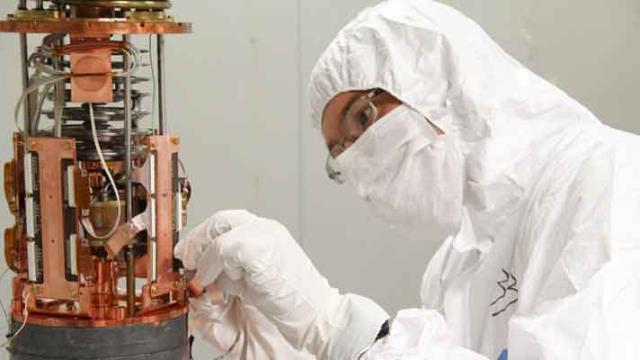It’s hard to describe exactly how cold the coldest cubic metre in the universe will be. Frozen to just a blip above absolute zero — the temperature at which atoms cannot even vibrate — the CUORE experiment will try to nail down a tiny number that has long eluded physicists: the mass of a neutrino.
The CUORE detector, or the Cryogenic Underground Observatory for Rare Events, is housed deep inside a mountain in Italy. As one of the world’s largest cryostats — think a super-cold fridge cooled by liquid helium — it is built to crazy specifications, including shielding made of millennia-old lead from a Roman shipwreck. (Ancient lead has less natural radioactivity.) CUORE will be fully underway in 2015.
To understand why the CUORE detector needs to be so cold, get ready for some particle physics. CUORE is built to detect a process called neutrinoless double-beta decay, which has been theorised but never seen before. It’s a process where atoms lose two electrons and exactly zero neutrinos. But, wait, aren’t we looking for the mass of neutrinos? Well, “standard” decay spits out two electrons and two neutrinos. Do some maths and voila, you have the mass of a neutrino — assuming it all goes according to theory.
The CUORE detector needs to be cold because neutrinoless double-beta decay releases just a tiny amount of energy. The energy released raises the temperature inside by an equally tiny amount — the colder your baseline, the better you can detect this tiny change.

The detector inside the CUORE cryostat. Picture: LNGS
The detector itself is housed inside a series of chambers like Russian dolls, each one smaller and colder than the one before. The last and coldest chamber is about a cubic metre in volume and frozen to just a blip above absolute zero. In a paper recently uploaded to the preprint repository ArXiv, Jonathan Ouellet of UC Berkeley and the CUORE experiment describes it as the coldest cubic metre in the universe.
To be sure, scientists have achieved colder temperatures before — getting down to one 10 billionth of a degree above absolute zero and even below absolute zero thanks to weird quantum effects. What makes CUORE unique is its size and the fact it will be continuously running for five years. It will be colder and larger than any manmade or natural space in the universe — well, let’s say known universe.
If you have a penchant for more detail, read Ouellet’s paper on ArXiv, where he acknowledges caveats such as, “The definition of the cubic meter can be made fuzzy. Here I have considered only a simple contiguous convex volume of space.” Yup, that’s right. [ArXiv]
Picture: Assembling an early version of CUORE (CUORE collaboration)
